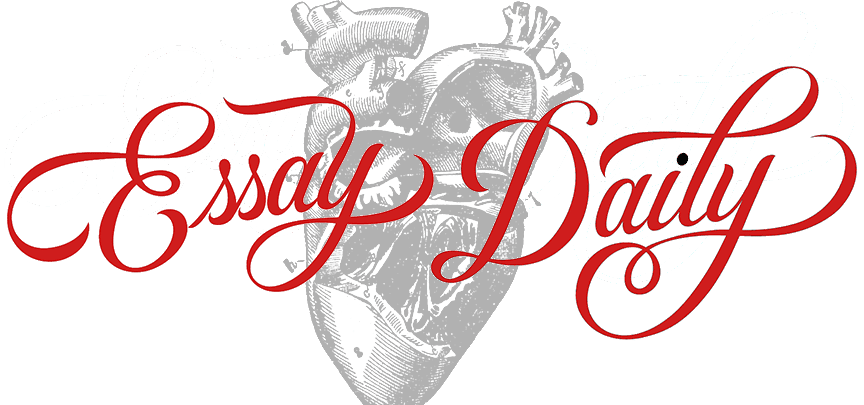While I am
historically a fiction writer, I’m always going to have an interest in writing the
sudden essay. It’s good for me, as the one issue that plagues me in longer
works is stamina. I tend towards the shortwinded, and suffer compositional
stitches in the side during extended work. Will I ever be a cross-country
novelist? Not likely. But here’s an interesting find: writing within the
constraints of the sudden or “flash” form primes my work in longer forms.
How does a new
marathoner prepare for race day? Not by running the entire 26 miles every week,
but by tackling a series of shorter distances, then perhaps a 5K, a 10K, a
half-marathon. Sudden forms teach us to cut the unnecessary, regardless of how
enamored we might be of a superfluous phrase, sentence, or image. Flash pieces—both
fiction and essay--tune our ears, sharpen our observational powers, teach us
economic construction, and hone our editing skills. We learn to pack the
singular, vital, splendid clue into an eye blink of space, and not jump the gun.
Pretty discursive romps? Out!
Are flash
essays meant for readers with short attention spans? If you’re asking me, I’ll
say no. Flash essays are like Tibetan tantric poems: not very long, but one can
scarcely tear through them in two minutes, flip the page, and move on to the
next. You don’t do that with a brief poem, do you? Readers ought to be willing
to read a poem more than once to obtain the full sense. There’s a time for
strolling, and a time for sprinting. And a sprint, though swift, is scarcely a
plain matter. Popular culture, with its penchant for the large, the continuous,
and the grandiose, takes the fall for the erroneous presumption that short
equals simple.
The sudden
essay is a balancing act, wherein an author walks the beam between poetry and
prose. I mentioned earlier that I tend to be shortwinded. Hobbled by this handicap,
I need to take special care to abridge, rather than attenuate. In a sudden
essay—or, for that matter, sudden fiction—readers should “hear” something
coming, even if they can’t immediately identify what’s hurtling towards them.
Abridge, not
attenuate. A tricky exploit, requiring some derring-do. How may we use subtle
reference and indirect implication to make the most of a limited space? Condensation
is key, but we’ve got to take care not to leave gaps that the reader can’t leap
with us.
Charles
Simic, known for his succinct, imagistic poetry, happens to be an exceptional
essayist—and an inspiring one. Harrison Candelaria Fletcher, in his 2008 Writers Chronicle article “Writing a Shadowbox: Joseph Cornell
& the Lyric Essayists,” refers to Simic
as an example of a master lyric (and compact!) essayist at work. (You
may know that Cornell was a collector and self-taught modern artist best known
for his shadow boxes; hence Fletcher’s article title.) Fletcher’s article is
about lyric essays, not sudden essays, but his notion of being able to write a
shadowbox comes very close to what I consider as writing the sudden essay. Simic
himself—wholly apart from this article—had this to say about Cornell, images,
and that necessary but nebulous quality that I referred to earlier as “hearing
something coming”:
There really are three kinds of images. First there are those seen with the eyes wide open in the manner of realists in art and literature. Then there are the images that are seen with the eyes closed. Romantic poets, surrealists, and everyday dreamers know them. The images Cornell has in his boxes, however, are a third kind. They partake in both reality and dream, something that doesn’t have a name. They tempt the viewer in two opposite directions. One is to look and admire the elegance and visual properties of the composition, and the other is to make up stories about what one sees. In Cornell’s work, the eye and the tongue are at cross purposes. Neither is sufficient. It’s the mingling of the two that make up the third image.
When I write
a sudden essay, I glance—often—at the quote above to keep me in the right
mindset.
Following,
then, are what I consider the main takeaways from my sudden essay laps:
Marvelous,
moving narrative supported with specific, concise descriptions is essential. Each
sentence—perhaps every word in each sentence?—endeavors to advance the story.
Diction, phraseology,
repetition, alliteration, rhythm, syllabic continuity or discontinuity, all carry
heightened import in flash essays.
Endings need
not be tied with neat bows. Endings, while not necessarily resolved or absolute,
do need to be earned.
A beginning may
well start in media res. The floor
and ceiling of the work take shape during the telling. Which telling should be
the fruit of a compelling delivery wound within a reduced, definable, space.
Remember
Romanticist Robert Southey’s (1774-1843) wisdom: “It is with words as with
sunbeams.
The more they are condensed, the deeper they burn.”
If you’re
interested in learning more about Joseph Cornell, visit http://www.josephcornellbox.com.
It’s a neat site. And, if you’d like to try your own hand at writing a
shadowbox, dig up the March/April 2008 Writer’s
Chronicle. Fletcher’s article begins on page 44.
There you go.
Feeling stronger?
Lyzette Wanzer (@INTJs_rock) received her MFA in Creative Writing from Mills College. Read one
of her sudden essays in the Winter 2011 issue of Callaloo, or see an excerpt here: http://muse.jhu.edu/login?auth=0&type=summary&url=/journals/callaloo/v034/34.1.wanzer.pdf
A flash form connoisseur, Lyzette’s work has appeared in Tampa Review, The MacGuffin, Ampersand, Journal of Experimental
Fiction, Fringe Magazine, International Journal on Literature and Theory, Pleiades,
and others. She is a contributor to The Chalk Circle: Intercultural
Prizewinning Essays (Wyatt-MacKenzie, 2012) and 642 Tiny Things to Write About
(Chronicle Books, 2015). She’s currently at work on an essay collection
entitled Gelatin Prints. Visit her at
www.linkedin.com/in/ lyzettewanzer.

No comments:
Post a Comment